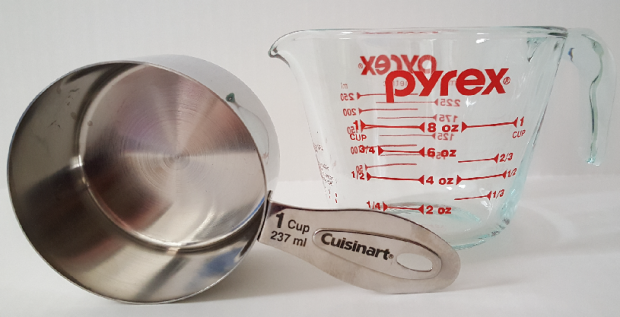
This was really difficult to photograph since the units (cups and ounces on one side and milliliters on the other) are only embossed. Most measuring cups use ink for contrast. Hopefully, the visual complexity of one side compared with the other still comes across.
Every once in a while I come across something that really lives up to the cliché of “a picture is worth a thousand words.” I thought I’d share the images above with you since it relates directly to our lack of metric system adoption.
Most glass measuring cups are fairly cleanly designed to show U.S. customary units on one side (no, we don’t use the Imperial units we originally brought over with us from the U.K) and those of the metric system on the other side.
However, the one I recently bought really puts our awkward system into full light.
Interestingly, when I pointed my find out to the person at the cash register, she indicated that she wanted one as well. Alas, as I was shopping in a discount store, I had to inform her that I was buying the only one I saw. (Frankly, I was pleased that someone else wanted something that I considered a fairly unusual item.)
Keep in mind that the whole point of having liquid measuring cups is to avoid spilling whatever one wishes to measure. In theory, the volume-based measure of, say a cup that can be leveled off at the top containing dry ingredients, should be exactly the same as for a liquid measure. The only reason for a liquid measure is to prevent spilling once the measurement is made.

Americans have both “dry” and “wet” measuring cups is so, if you need a full cup of a liquid, you don’t spill it. A liquid measuring cup provides “slosh” margin above the full-cup measure. Also, liquids tend to level themselves. “Dry” cups makes it easy to push off any excess material and make it level. That’s why you don’t normally see half and quarter cup measures listed within dry measuring cups—you couldn’t level them. [Note the ml printed on the dry measuring cup.]
There was no identifiable marker’s mark other than something that looked to me like almost a ying and yang mark. A mystery to me, but if someone else can shed light on the maker so I can get some more background—preferably in English—I’d be happy to hear it.
Thanks for reading,
Linda Anderman
